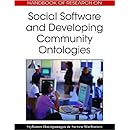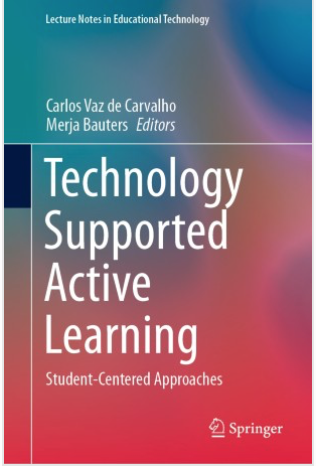The survey was developed based on the informal learning interactions in workplaces described by Ley and associates [2014]. The survey items elaborated possible socio-technical system functionalities using the ideas from the prototypes of Learning Layers tools. The online survey comprised of three groups of statements that represent the socio-technical learning system dimensions for informal learning at work:
- Sensemaking statements: Learn & organize knowledge (11), Share knowledge (5), Annotate knowledge (5)
- Scaffolding statements: Search Resource (3), Find Resource (2), Awareness of resources (5), Find expert (4), Share help requests (2), Get expert Guidance (6)
- Knowledge maturing statements: Accumulate knowledge in system (5), Co-construct knowlede (7), Validate resources and experts with technology means (5)
ANNEX. Survey: Socio-technical learning ecosystem opportunities for informal workplace learning
SENSEMAKING
Learn and Reorganize knowledge
- I find it useful identifying learning needs at work using the computer support
- I find it useful revisiting the exciting learning moments later on
- I find it useful taking records (notes, memos, reminders, photos, videos etc.) to capture my learning moments at work
- I find it useful that learning records captured at work could be used for further learning.
- I find it useful organizing the records of my learning moments into meaningful learning episodes
- I find it useful making records of which tools/resources I have used at work
- I find it useful reflecting (writing, audiotaping etc.) about learning records to make sense of what was learned
- I find it useful organizing records of learning into personal portfolio
- I find it useful collecting into personal portfolio learning resources about interesting topics
- I find it useful composing different views of records in portfolio for different purposes.
- 5I find it useful learning from videos of good practice and failure created by others
Annotate knowledge
- I find it useful adding keywords/notes to my learning records
- I find it useful organizing learning records/resources with tags/keywords suggested by the system
Share knowledge resources
- I find it useful that my reflections about learning will become part of shared resources
- I find it useful that author can decide the access and sharing rights for each record in the personal portfolio
- I find it useful that each document could be shared with others for learning purposes
- I find it useful sharing documents/folders with other professionals for learning
- I find it useful sharing documents with other professionals across workplaces
SCAFFOLDING
Search knowledge resources
- I find it useful searching the latest information about the topics of my learning interests
- I find it useful using mobile devices for searching learning materials directly at work
- I find it useful searching suitable learning materials from the shared system
Find knowledge resources
- I find it useful finding learning materials related to my work easily during working
- I find it useful to access my previous learning records when I need them during work
Awareness and recommending
- I find it useful to get automatically notices about shared resources and learning activities of other professionals in my field
- I find it useful to get automatical notices about the modifications of certain normatives or guidelines
- I find it useful discovering new learning interests by getting notifications of learning interests and needs of others
- I find it useful getting system suggestions of the most relevant learning materials that other users have considered useful
- I find it useful using guidance materials created by other learners
Find expert
- I find it useful expanding social networks with new experts
- I find it useful of requesting help from my social network at work
- I find it useful identifying trustful learning experts by their rank of the quality of help they have provided
- I find it useful getting suggestions to expand my social network with relevant experts who can provide guidance
Get expert guidance
- I find it useful negotiating problem/task context while receiving/providing guidance
- I find it useful getting less guidance when competence increases
- I find it useful mainly receiving guidance how to better organize my learning activities at work
- I find it useful mainly receiving hints how to make sense of new knowledge in work context
- I find it useful being guided by experts in using collective resources
- I find it useful being guided by experts in using the objects and tools at work
Share help requests
- I find it useful seeing the help requests from others that match with my expertise
- I find it useful sharing the help requests in my social network to locate most relevant experts
KNOWLEDGE MATURING
Co-construct knowledge
- I find it useful co-constructing new learning resources from different people’s contributions
- I find it useful that learning resources can be improved by incorporating different viewpoints from experts
- I find it useful that learning resources can be improved by integrating related resources
- I find it useful improving official descriptions of work processes, normatives and guidelines by local networks of experts
- I find it useful discussing normatives and guidelines locally among experts
- I find it useful creating knowledge of work processes as a result of many contributors‘ efforts
- I find it useful collecting knowledge of good guidance and support from actual guiding practices at workplaces
Validate with technology means
- I find it useful that other professionals in the network can rate learning resources
- I find it useful that other professionals in the network can endorse my competences
- I find it useful endorsing personal expertise by networking peers
- I find it useful rating or commenting learning materials from my task context to make them better contextualized
- I find it useful rating experts based on provided guidance
Accumulate knowledge
- I find it useful that everyone’s learning events can be automatically traced
- I find it useful that each tool and learning material has digital records and use-histories.
- I find it useful that digital documents would capture discussions about learning episodes around them
- I find it useful that learning resources can collect discussions about them
- I find it useful that learning resources can be improved by accumulating their use-histories
- I find it useful that normative guidelines at work would consist of ‚official‘ immutable and ‚inofficial‘ mutable content
- I find it useful influencing the collective knowledge by personal notes
- I find it useful accessing the use-histories of objects, tools or digital learning resources









